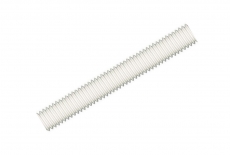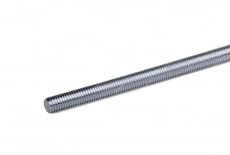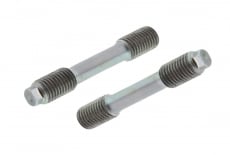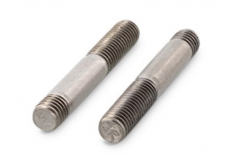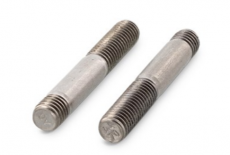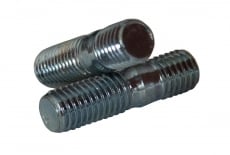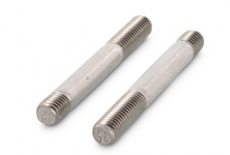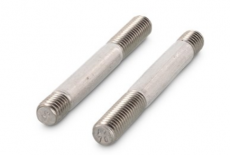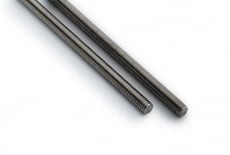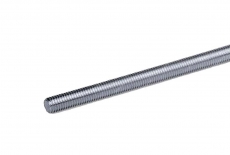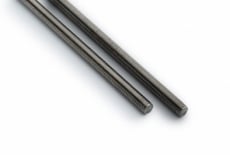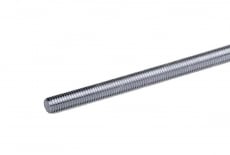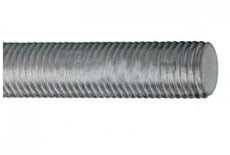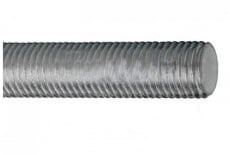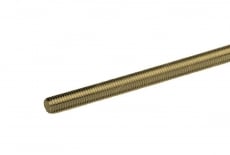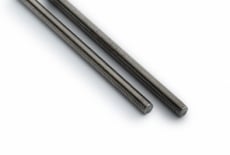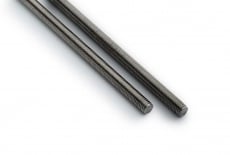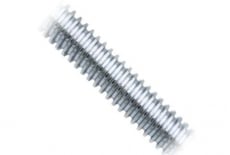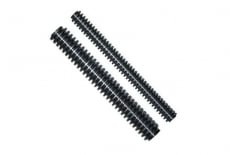Color marking of threaded pins is a system of determining the size and characteristics of threads on rods using colors. This system allows you to easily determine the size and properties of the thread, which allows you to ensure the correct choice of material and connection.
Pins general information
A pin is a special type of cylindrical fasteners. Both ends of the shaft are threaded, sometimes it may have a continuous thread.
When there is a need to connect two parts at a certain distance during the installation of various assembly or construction structures, pins become an indispensable element. Thanks to the thread, located at both ends, it helps to connect parts in a high-quality and professional manner.
Types of threaded pins
There are several types of threaded studs used for different applications.
The most common types are:
- Metric Rods: These studs are measured in the metric system of measurement.
- Inch Rods: Measured in the inch (imperial inch) system of measurement.
- Pin threaded: have a pin shape and are used to connect two parts with a pin hole.
- Conical threaded: have a conical shape, which allows them to provide a hermetic connection between two parts.
- Left-Hand Threaded: These studs have a left-hand thread instead of the standard right-hand thread. They are used for special applications, for example, to connect two parts that can spin under normal conditions.
- With a trapezoidal thread: the pin has the appearance of a rod along the entire length of which a thread is applied. It is intended for building fastening structures with a trapezoidal thread.
Geometric parameters of threaded studs
The dimensions of threaded studs include the following parameters:
- Thread Diameter: This is the diameter of the outside of the thread on the stud where the nut is normally located.
- Number of turns (for inch pins): this is the number of complete turns of thread per 1 inch.
- Thread Pitch: This is the distance between two adjacent threads. Thread pitch is usually measured in millimeters.
- Thread Length: This is the length of the part of the stud on which the thread is located. Thread length may vary depending on the specific application.
- Thread Shape: The thread on the pin can be of different shapes, such as straight thread, taper thread, etc. The shape of the thread can affect which parts can be joined with a pin.
- Material: Threaded studs can be made of various materials such as steel, stainless steel, copper, aluminum, polymers, etc. The material affects the strength and corrosion resistance of the pin.
- The strength class can be marked on the pin itself, or indicated in the product documentation.
- Coating: Some threaded studs may have a coating to protect them from corrosion or wear.
- Accuracy class: this is a parameter that indicates the accuracy of thread production on the stud.
Meaning of color marking of threaded studs
Color coding should be applied to one or both ends (face/faces) of the threaded rod to facilitate quick and reliable assignment.
The main meanings of the colors of markings on threaded rods may include:
 |
green (RAL 6024) - the stainless steel А2-40. |
 |
red (RAL 3000) - the stainless steel А4-70. |
 |
brown (RAL 8015) - the strength class 5,6. |
 |
blue (RAL 5010) - the strength class 5,8. |
 |
yellow (RAL 1023) - the strength class 8,8. |
 |
white (RAL 1013) - the strength class 10,9. |
 |
black (RAL 9017) - the strength class 12,9. |
|
|
without marking - the strength class 4,8. |
It is important to note that the color marking values of threaded studs may differ depending on the region or country of the manufacturer. Therefore, before using threaded pins, you should always check their characteristics and markings in the product documentation.
Pins on our website
On the website of the Dinmark company, you will find such pins as:


 Threaded Pins (63)
Threaded Pins (63)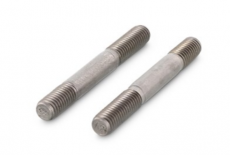

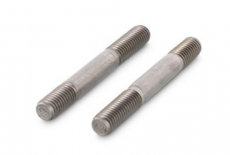

-6583.jpg)



-6584.jpg)

-9032.jpg)


-6587.jpg)
-3473.jpg)
-3474.jpg)


-5648.jpg)
-6588.jpg)
-6388.jpg)
-7199.jpg)
-7901.jpg)
-7936.jpg)

